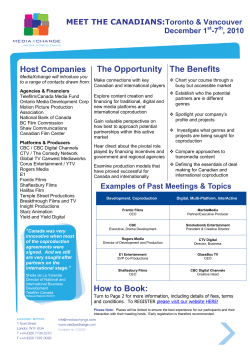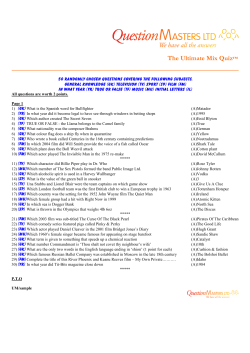
Craig Collins
Craig Collins At the beginning of this project, we decided to create a teaser trailer for a post-apocalyptic film. We chose this as it was something we were all very interested in creating due to our individual film interests, and we also believed that it would be a unique, original idea in the context of the classroom setting. We were also all aware of certain areas we could shoot our footage where we could easily create the illusion that the rest of society has fallen, thus making this difficult genre doable for us. For our initial research (blog posts 8th-22nd November), we looked at several different post apocalyptic films to establish what the common conventions of them are. Studying films such as The Road (John Hillcoat, 2009), 28 Days Later (Danny Boyle, 2002), Waterworld (Kevin Reynolds, 1995) and Zombieland (Ruben Fleischer, 2009), we found that although the content within these films varies massively (each with elements of drama, zombie horror, or even comedy) , there are several key themes that are woven into the narrative of each. The most obvious example is the isolation; most of humanity is usually either dead or on the brink of extinction, and therefore other than the main characters, other humans will be scarce and usually divided up into two groups: fellow survivors, or enemies. Therefore, the relationship between the main characters is always emphasised, such as the father and son in the road, or the four travelling survivors who are initially strangers to each other in Zombieland. We have incorporated this in our teaser trailer by only showing the two main characters, except for the last shot where it is hinted that they join with another pair. The only other human shown in the trailer is a victim of a lynching, and the characters running in the trailer hints at enemy factions. To heighten this theme, we also elected to use landscapes and shots that evoke loneliness, such as the wide open empty countryside. Another common theme in the films is a certain character type: the main characters in these films, or at least one of the main characters, can usually be classed as what Dr. Eric Dodson (2010) refers to as the "post-modern cowboy". While they differ from gunslingers in the Wild West in that they have not chosen to be part of the world they live in, they share many traits by being strong, selfsufficient, and able to live under the constant threat of further devastation. While our characters don't exactly get much development in the teaser trailer, we chose James (our main actor) to play the role in the film as his larger build fits in well with this strong character type. We wanted to represent his character as a strong lead, our own post-modern cowboy. Films of this kind often have many elements that you’d find in action and thriller films, such as intense action sequences and chases. However, what you often get from these films that you don’t from others are philosophical overtones; these films often stem from the worries of the people over how the world will end, and are often influenced by the political environment at the time. For example, films featuring the threat of nuclear war are not uncommon and, in this day and age, the economic downturn often plays a part. We incorporated the latter into our treatment of the film; while it does not feature in any of the texts we produced, we had the idea that the reason for society collapsing was due to the economy crashing and healthcare subsequently failing, allowing new diseases to spread. We made most of the trailer slow and atmospheric, to emphasis these more solemn themes, and hinted at disease in the intro. However, as we still want our film to contain action elements, we also showed faster paced scenes right near the end of the trailer. This also helps us to appeal to a broader, more mainstream audience. Both our film poster and magazine cover feature the same main image, the silhouettes of the main characters in front of a blood red sky. This is a single iconic image that is also used at the end of the trailer, and evokes all the feel of the film, as well as the harsh colours hinting at elements of horror and action/adventure, which helps to appeal to a broad audience. The key differences between our poster and our magazine cover lie within the surrounding text and layout. The poster features a tagline over it that immediately reveals the dark nature of the film, and leaves little else in the way of details other than a title, a release date, and of course the main film crew, production company and accolades in the way of film festivals. The magazine cover is less about the film itself, and more about an early feature on it contained within, using the image only as an advertisement for what’s inside. Of course, as the magazine isn’t made specifically for the film, we researched what other films were to be coming out in that time period that would likely be reported on, and included them as the “side stories” advertised on the cover. Both are designed to appeal to the casual onlooker going on their day, possibly about to make an impulse buy in the cinema/newsagents and we have shown our understanding of this by making our main advertisement image bold, memorable and able to stand out within that context. In our “blood red sky” image, we have created a strong, unified brand image for our film across several mediums. Therefore, I believe that are combination of ancillary texts results in a highly cohesive marketing strategy for our target audience. As we developed our film and made rough cuts, we uploaded these to Youtube to receive peer feedback, initially coming from our friends and other family members by posting the links to Facebook and Twitter. This feedback was highly positive, with the main criticism being of the editing, which in places was clunky and made the actions onscreen look more comical than serious. This was fixed as time went on as a result of the feedback. As our trailer was nearing completion, we showed the near-final cut to other Media students in Varndean College. Again, feedback was highly positive, with particular focus given to the voice-over and locations. The main criticisms given at this point were on the fonts of the text used in the trailer at this point, as well as some transitions of shots still not sitting quite right. As we finalised the piece, these criticisms were taken into consideration, and the fonts were quickly changed and we made the editing more synchronised with the music in the background to make it flow better. It was great for us to gain approval of people our own age, as this age group reflects the lower-age level of our target demographic for this film. As we were developing the film, we always had it in mind that we would want to make it a film that’s rated as a 15, as this would allow us to be violent and edgy with the material without losing out on much audience, as we don’t think young children would be interested in a film of this dark, somewhat depressing subject matter. By gaining approval from people our age as well as some older people, I believe we have done a good job at catering our film towards a specific target audience of young adults. Our film was created using an HD camcorder, which offered a good compromise between portability and image quality. All the footage was stored on tape, and could then be connected to the PC for manipulation on Adobe Premiere. The software was highly sophisticated and intuitive, allowing us to easily alter the footage in many interesting ways such as changing the colour and tint in order to create a dreary atmosphere, or create interesting transitions between shots such as large bursts of light, or adding effects to shots such as the “negative light” effect. The piece of music that can be heard in the background of the trailer was written and created by Callum for the sole purpose of use in our trailer. Created digitally using music editing software, it was made with a steady rhythm and a crescendo in order to give the trailer a backbone in terms of pacing and a “beat” for the clips to fade in and out to. Our initial research and planning, which can be seen on the blog, mainly featured us watching films and clips of films that were relevant to our initial ideas, and then talking about them in relation to our plans. A great advantage of the blog, as well as using Powerpoint presentations such as this, is that is allows us to communicate our ideas visually as well as through text. However, a limitation is that we could only link to Youtube clips rather than present them on the pages themselves. Using the blog as a medium for writing down our recaps and thoughts over the processes of the development of our trailer has been very beneficial to us as a group, as it has helped to make the effort a very collaborative one. The blog as well as Powerpoint have been very effective methods of communicating our ideas, though we are all very aware that Powerpoint does not lend itself very well to large essays, and instead encourages a somewhat more visual approach than your standard write-up.
© Copyright 2025










